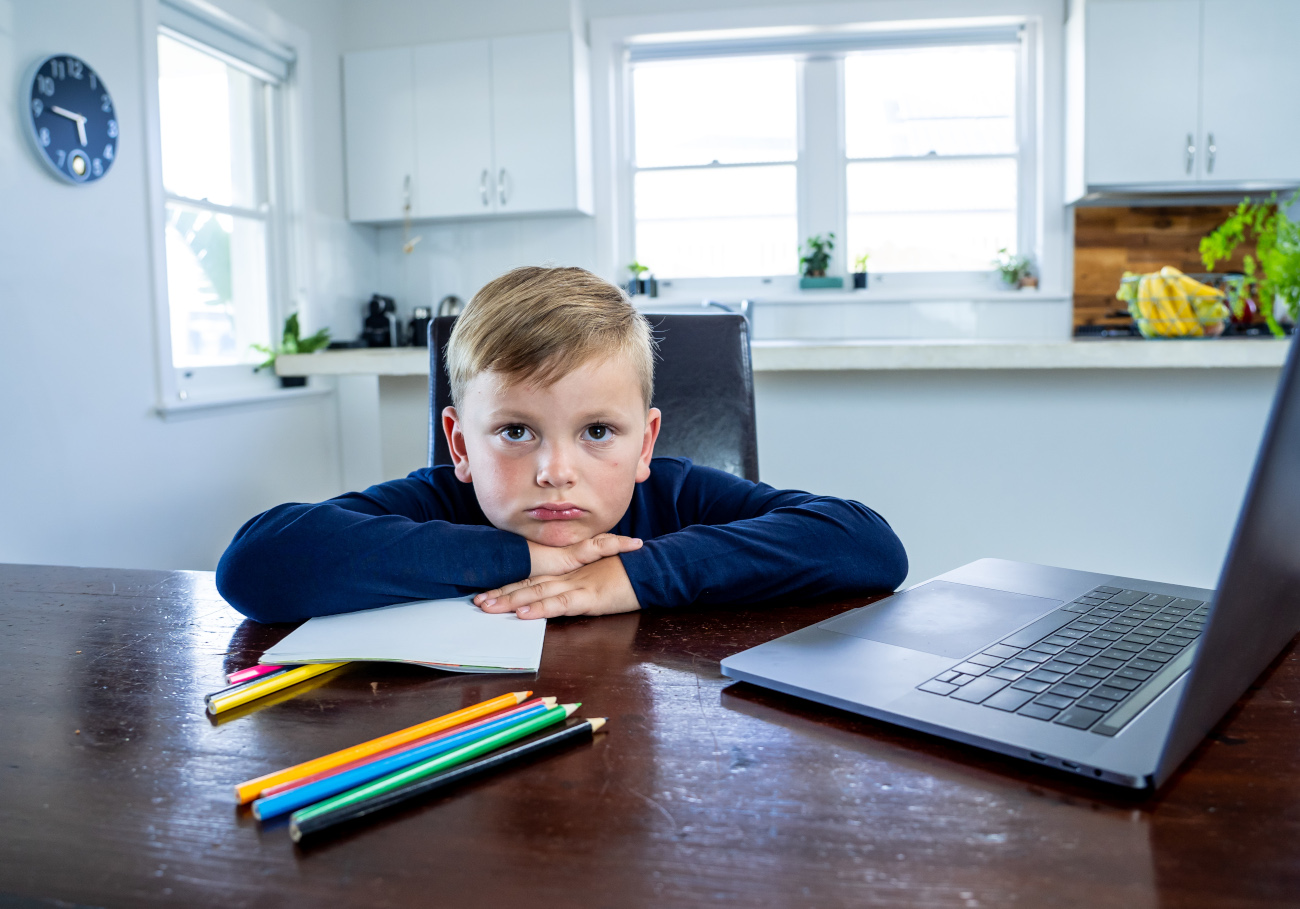COVID-19 has changed many aspects of our lives, including how we learn. Right now, school districts across the United States are struggling to answer tough questions.
Is it worth the risk to allow students to return to in-classroom instruction? How can we protect everyone from infection, including faculty? How will the added costs of dealing with these changes be covered?
Education is important. However, school attendance also has another benefit. It provides a safe, secure place for children while their parents and guardians go to work.
Michael Griffith is a senior school finance researcher and policy analyst at the Learning Policy Institute (LPI). He views schools as a key part of restoring the economy.
“A strong system of public schools will be an essential component of the economic recovery, enabling parents to get back to work while seeking to address the learning loss and trauma many children have experienced,” he explained in an LPI blog post.
While getting children back in the classroom as soon as possible seems like a cut and dry solution to some, it is an unnecessary risk to others.
Public school teacher Rebecca Martinson published an opinion piece for The New York Times. In it, she begs parents to consider the risks of making her and other educators return to school during a pandemic.
The tagline reads “Please don’t make me risk getting COVID-19 to teach your child.”
Martinson brings up an interesting comparison. She discusses being prepared to take a bullet to save a child during an “age of school shootings.” However, she explains that making her risk exposure during a pandemic is akin to taking that same bullet “home to my own family.”
“I won’t do it, and you shouldn’t want me to,” she urges readers.
The risk of a virus is different from other hazards. School shootings are devastating tragedies that can affect a large group of people – but they are still isolated compared to the spread of illness during a global pandemic.
A household with high-risk family members is particularly aware of the danger. A healthy person could return home from their job and potentially infect all or many of their loved ones.
School districts are weighing their options and risks. Many are painfully aware of what they are asking educators. Even now, with summer beginning to wane, schools across the country are trying to decide what a 2020-2021 academic year should look like.
States and Schools Make Hard Decisions During COVID-19
There is a development and growth cost when schools shut down. Children may lose out on opportunities that previous generations took for granted. It can also cause delays in education, depending on how long shutdowns last.
Researchers Andrea Ichino (European University Institute) and Rudolf Winter-Ebmer (University of Linz) published a paper discussing the long-term effects of World War II on education among children who were school-age at the time.
The pair identified a noticeable earnings loss among this generation that was present even 40 years after the war had ended. They connect the loss to educational hardships experienced during the conflict.
While we consider the ramifications of reopening or keeping schools closed, it’s important to remember that COVID-19 is an illness. It has no political affiliation or national allegiance. If the opportunity to spread exists, it will take it.
That means that no matter what decisions are made, schools need to take steps to protect everyone involved.
There is also a more immediate factor to consider: the financial cost.
Taking those extra precautions isn’t free. For those who go back to traditional classrooms, additional supplies will be needed. Medical equipment will have to be bought for daily use to monitor health. The faculty will also have to invest more time in cleaning and checking for symptoms each day. Plans will have to be created to deal with a potential outbreak.
For school districts that decide to switch to remote learning, there will be a technological investment required. Every student needs to be equipped with a way to attend online classes. While the majority may already own a computer, there will be some who do not. In other cases, parents may need access to the home PC to work remotely, creating a need for a second device for the student to use.
Devices and internet connections are not something many families can afford when jobs are lost, and household income is reduced.
If funding is any indication, it appears that the school experience may vary greatly across the nation next semester.
Last month, Governor Ron DeSantis killed the $29.4 million Complete Florida Plus Progam that was going to supply a suite of online education services throughout the state. These services have proven critical for faculty and students during the pandemic.
The funding was meant to go toward resources like a database of online courses and an online library that would provide 1.3 million students and staff with access to 17 million books.
The decision may also cut scholarship money for over 2,000 adult learners and may put school accreditation at risk. Around 150 Gainesville, Tallahassee, and Pensacola employees may lose their jobs as a result.
Despite the sweeping effects of the decision, the governor’s office remained silent. Earlier this month, the State University System Board of Governors was working to try and sustain essential online and library services.
“In light of the veto of the funds of Complete Florida Plus, we are in the process, working with the Florida College System, of identifying the essential online and library services for both systems,” said director of communications Renee Fargason.
Texas Moves Forward with Funding for eLearning
Governor Greg Abbott and Lieutenant Governor Dan Patrick decided to take Texas in a different direction. They and other leaders announced that the state will provide $200 million in CARES Act funding on Friday, July 17th.
The Texas CARES (Coronavirus Aid Relief Economic Security) Act was created earlier this year to provide fast and direct economic aid to works and small businesses.
Funding will be given to the Texas Education Agency (TEA) to pay for learning devices, routers, hotspots, and internet connections for students.
“As school districts delay the start of in-person instruction for the 2020-2021 school year due to COVID-19, it is essential that we work to provide Texas students with the devices they need to connect and communicate online for classroom instruction,” announced Governor Abbott.
“As we continue to combat COVID-19 in Texas, we are committed to providing reliable and effective solutions that will help students academically succeed while protecting public health.”
Lieutenant Governor Patrick discussed developing virtual learning plans to “ensure that students do not lose valuable learning time as we continue to fight COVID-19.” He described the funding as an “essential step in closing the digital gap for students by making access to technology available to every child who needs it.”
This new funding is paid in addition to a previously approved distribution of up to $400 million that will go toward COVID-19 related costs for the 2019-2020 school year.
The money is also going to cover a reimbursement program for home internet and devices that are purchased by local education agencies.
Accessibility is essential if eLearning is going to work, according to Senator Jane Nelson.
“Virtual learning works when students have access to the proper wi-fi and electronic devices. These funds help bridge the digital divide and prevent students who lack access to technology from falling behind.”
Senator Juan Hinojosa shared a similar sentiment.
“No child should ever be denied the ability to achieve his/her dreams simply because he/she does not have technological devices or internet access. Education is the great equalizer and while that will look different in the near term, a move to distance learning to protect students and teachers can only be effective for all learners if they are all able to actively learn and participate.”
What Will School Look Like in 2021?
Decisions are still being made about whether schools will reopen completely or if eLearning will play heavily in each state’s plans. Several states, including Pennsylvania, Maine, Minnesota, Idaho, Colorado, West Virginia, and Oklahoma have not made official announcements about reopening next year, according to a Ballotpedia map.
Meanwhile, other states, like Nevada, Montana, Wyoming, Iowa, and Alabama are permitting districts to open. Others fall in between with reopening plans that include guidelines and limitations.
Educators and parents will have to continue monitoring the situation in case the official statement changes as we near the end of summer. Parents should also consider learning more about how to help students with their studies at home to avoid falling behind.
One thing is certain during this time of uncertainty: eLearning will feature heavily throughout most of the country.







